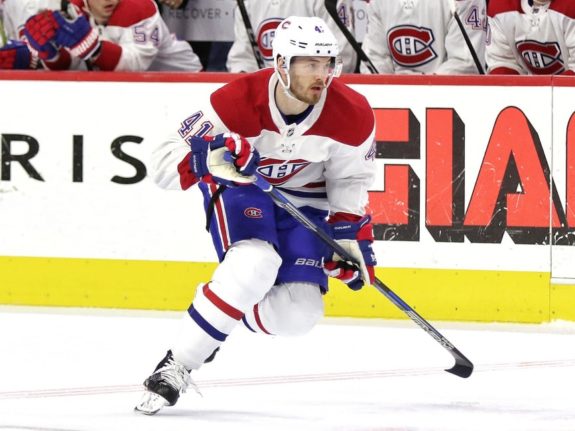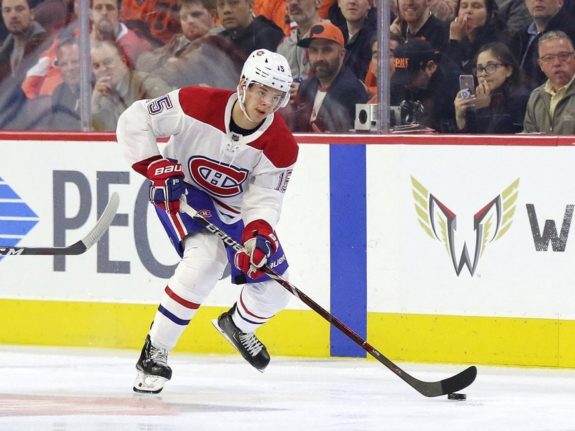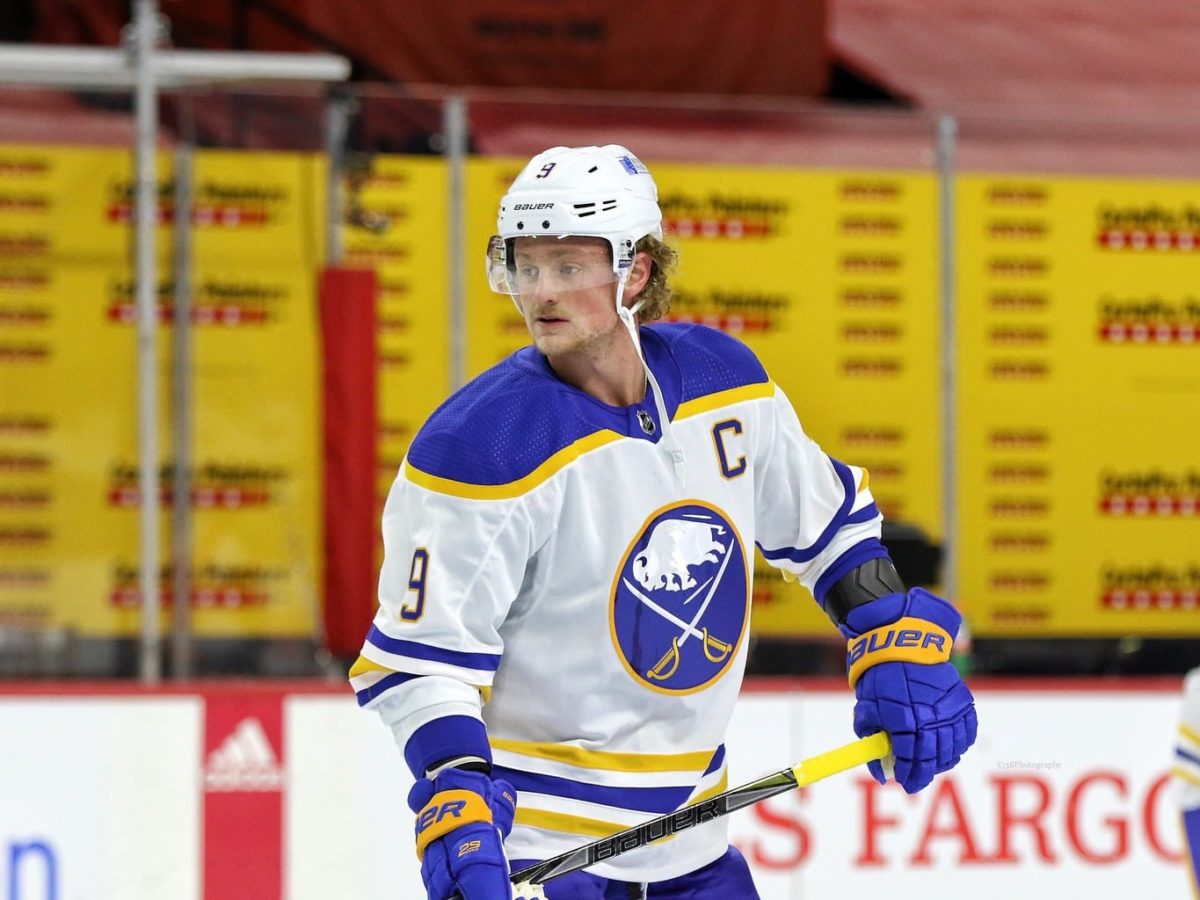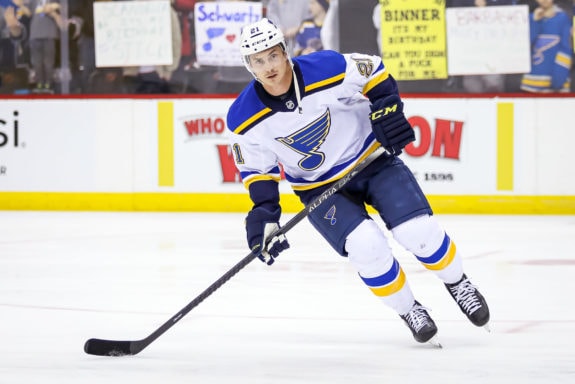As the dust from the NHL expansion draft, entry draft, and free-agent frenzy begin to settle, the Montreal Canadiens’ roster seems to have settled as well. The Habs have 21 players and only about $21,000 in cap space remaining. However, captain Shea Weber has not yet been placed on long-term injury reserve (LTIR), which means an additional $7.85 million will be made available for general manager Marc Bergevin to use to fill three open roster positions.
Also, recent reports revealed that Paul Byron will be recovering from hip surgery for the next five months, which could explain by Bergevin signed veteran Mathieu Perrault to a one-year $950,000 contract; to provide veteran depth among the bottom-six while Byron is placed on LTIR until December.

One area of concern will be at center. This is not for a lack of skill, as the Canadiens can boast of their quality young talent for the first time in years. However, their lack of experience will raise more than a few questions. After Phillip Danault signed with the Los Angeles Kings as a free agent, the team needs an experienced, defensively capable center who can win faceoffs.
Bergevin has several options to fill the gap at center, with proper cap management, a strong prospect pool and many draft picks. Here they are.
From Within
Bergevin could fill out the roster at center with the prospects they have been grooming for some time. The experience gained by Nick Suzuki, Jesperi Kotkaniemi and Jake Evans over these last few seasons, especially in their run to the Stanley Cup Final in 2021, has gone a long way in providing them additional development time and opportunity.
Without Danault, Suzuki will be given a larger role in the top-six. In the 2020-21 regular season, he led all Habs centers in points and ice time (TOI) at 18:11. He earned a role on the top power-play unit and even saw time on the penalty kill. Now entering his third NHL season, Suzuki is the Canadiens’ top center moving forward, and he will be asked to take on even more responsibility in matching up against their opponent’s top lines.
There’s also hope that Kotkaniemi will be able to solve his consistency issues and be able to step into the second-line center role. This is where the questions start to come up; can he shoulder the responsibility of this role and provide the two-way play necessary for Montreal to compete in a very competitive Atlantic Division next season?

The third-line center spot is also uncertain since we don’t know if Evans can provide the defensive play necessary to match up against the opposition’s top lines, provide an energy role, or remain healthy for an entire season. Some have Ryan Poehling pencilled into the lineup after a strong showing in the AHL last season, but the Canadiens are not known to rely on a sophomore or rookie in a key position.
Bergevin may be forced to go with their youth; however, it is unlikely that a GM in the final year of his contract will bet on a center group that has a combined six NHL seasons of experience, regardless of how skilled they are. He is more likely to attempt a trade or sign a free agent to buy his young centers more time to grow.
Trade
Some big names and some lesser-known players have been attached to the Canadiens on the trade front. I will focus on their two best options.
Jack Eichel
The biggest name circulating is Jack Eichel of the Buffalo Sabres. Finding a top center is hard, yet here is one openly available on the trade market. There are several reasons for this, but the biggest one that should concern the Habs is his health. Most recently, Eichel has been arguing with the Sabres on how to repair his injured neck.
The longer this drags on, the less likely it will be that he can return in time for the 2021-22 regular season. If Bergevin is serious about acquiring a top-line center, even one with a neck issue, he must act now. The Canadiens have a wealth of prospects, picks and young roster players who could build a worthwhile package for the Sabres to consider in return for Eichel.

Sabres GM Kevyn Adams wants multiple top-end assets in return so that he can say he “won” the trade, which likely means Suzuki and/or Cole Caufield would have to be included. However, those two are likely untouchable, so unless Buffalo is interested in anyone else in the system or Bergevin blinks and includes one of the two, this trade won’t happen.
Andrew Copp
Andrew Copp isn’t a big name, but at 6-foot-1 and 206 pounds, he’s a big-bodied player. Last season, Copp took on a larger role with the Winnipeg Jets, playing a top-six center role and filling in on the wing when others were injured. The added responsibility seemed to fuel his game as he had a breakout season, scoring career-highs in goals (15) and points (39) at 27 years old.
Latest Canadiens Content:
- Projected Lineups for the Canadiens vs Wild – 11/14/24
- Laval Rocket Players Who Can Help the Canadiens
- Montreal Canadiens Scapegoat Search for 2024-25
- Canadiens GM Kent Hughes Has the Flames in a Tough Spot
- 3 Takeaways From the Canadiens’ Wild 7-5 Win Over Sabres
Copp is a Restricted Free Agent (RFA) who has filed for salary arbitration. While the Jets have $6.96 million in salary-cap space, they also have to re-sign Neil Pionk and Logan Stanley, two key pieces of their blue line. To convince Winnipeg to part with a solid performer like Copp, the Canadiens would need to provide at least an NHL-ready center prospect and a pick.

Offering Poehling, who is also an RFA, would provide the Jets with some cap flexibility and give them a young center who is from nearby Minnesota; Bergevin could also offer draft picks as those would likely be necessary to get a deal done.
Copp would easily slide into the Canadiens’ third-line center role, providing the gritty, physical style necessary to match up against the league’s top players. He can also be a defensive faceoff specialist and provide the Habs with some size and much-needed offensive punch in the bottom six.
Free Agency
The free-agent market is the most likely avenue Bergevin will explore to add experience at center. The names available don’t have any star power, nor would they provide long-term solutions to the depth issue. What they do have, however, is the experience to play defensive minutes and the ability to win faceoffs – to important roles to fill after the loss of Danault. Here are just two possibilities.
Eric Staal
Re-signing Eric Staal would be a good move for the Habs’ fourth line. He knows the team after being part of their Stanley Cup Final run. He knows his role and proved he fits into the bottom-six extremely well. Staal should also be affordable on a short-term deal. It’s uncertain if he would want to return since his time in Montreal was spent alone, away from his wife and children, because of pandemic protocols but if he and his family can be convinced to move back to Canada, keeping Staal would be an excellent fit.
Tyler Bozak
Tyler Bozak just completed three seasons with the St-Louis Blues, where he won the Stanley Cup in 2019. As their third-line center, he played a solid two-way game and killed penalties. He can also generate offence at five-on-five and is very strong in the faceoff circle, with a career average 53.6% success rate.

At 35 years old, Bozak isn’t a long-term solution, and Bergevin would need to keep the term short, similar to St-Louis’ three-year deal that he signed in 2018. For the Canadiens, two to three years would be acceptable; however, he would have to be willing to take under his current $5 million, which seems to be Bergevin’s threshold for third-line centers (and what is rumoured to have been offered to Danault).
The Canadiens could enter the season with their three top centers having just six seasons of combined NHL experience and a fourth-line center in Cedrik Paquette, who alone has seven. This is not ideal for a team that relies on its veterans. While it is clear that Bergevin could enter the season with this roster, it is also clear he knows it will be an issue that he has to address, especially if the Habs have any hope of competing in the Atlantic Division.
